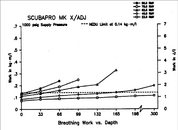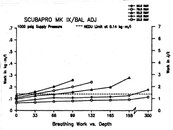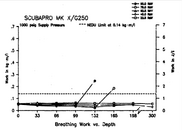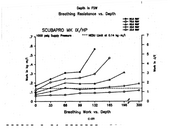Zung
Contributor
As an experiment, I set up the following during my last dive trip:
I did a side by side comparison and it was REALLY hard to tell the difference. Maybe the 109 has a bit more of an on/off effect, and the 156 is a tiny bit smoother, but I couldnt consistently tell which is which without looking at the cheater. Half way into the dive, I gave up because the difference is too small to make the experiment worthwhile.
And yes, at that setting, both seconds free flow in a face down position. Interestingly, a G250 at a similar state of tune does not.
The morale of the story is: while its totally cool to be able to balance the 109, the effectiveness in terms of breathing is close to zero, and the cost of a balanced seat is maybe a hundred times more than an awap seat.
- SP MK20, IP 9 bar / 131 PSI, no creep
- SP 109, duro poppet, cracking pressure 22 mm / .9 inch
- SP 156, s-wing poppet, cracking pressure 22 mm / .9 inch
I did a side by side comparison and it was REALLY hard to tell the difference. Maybe the 109 has a bit more of an on/off effect, and the 156 is a tiny bit smoother, but I couldnt consistently tell which is which without looking at the cheater. Half way into the dive, I gave up because the difference is too small to make the experiment worthwhile.
And yes, at that setting, both seconds free flow in a face down position. Interestingly, a G250 at a similar state of tune does not.
The morale of the story is: while its totally cool to be able to balance the 109, the effectiveness in terms of breathing is close to zero, and the cost of a balanced seat is maybe a hundred times more than an awap seat.




 ), and a single 156 (I know one has been upgraded as I had it done years ago, including the logo face plate), so its great to know I can get the desired performance without the substantial investment.....
), and a single 156 (I know one has been upgraded as I had it done years ago, including the logo face plate), so its great to know I can get the desired performance without the substantial investment..... 




